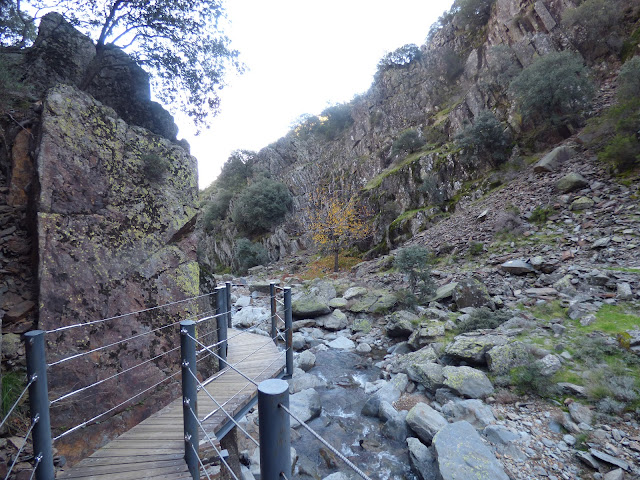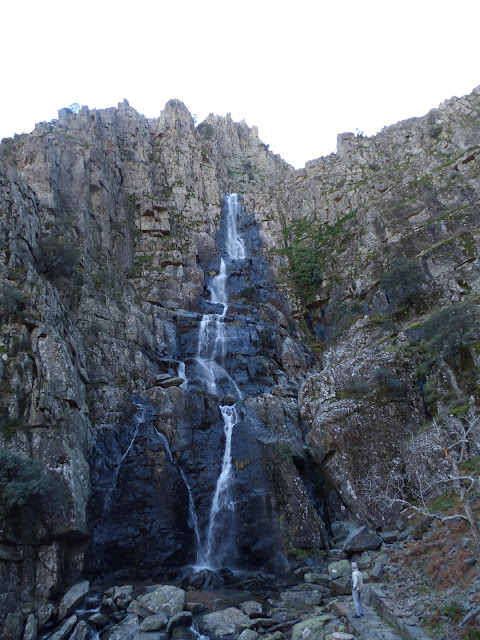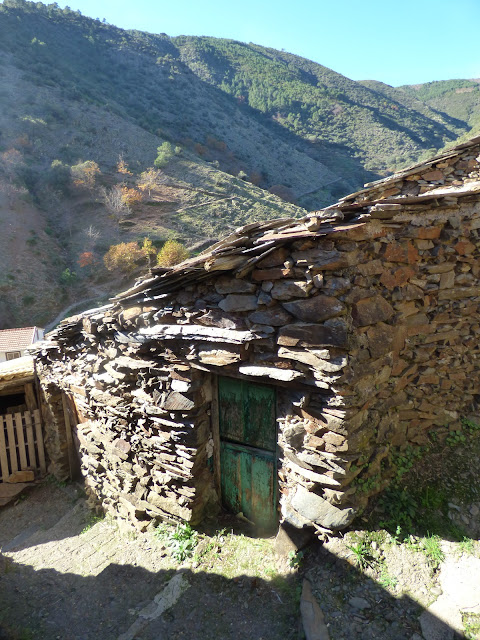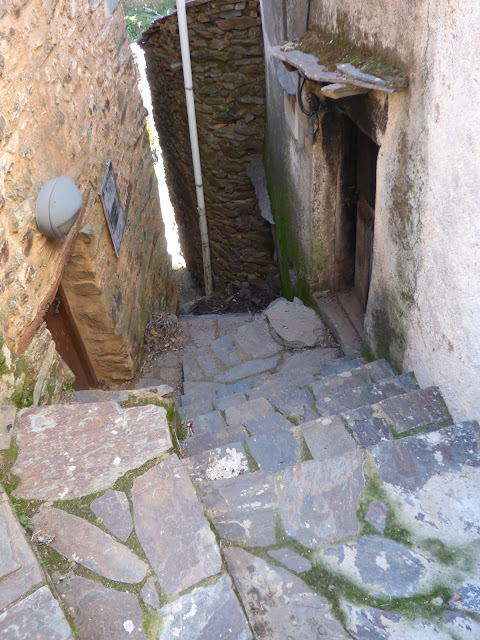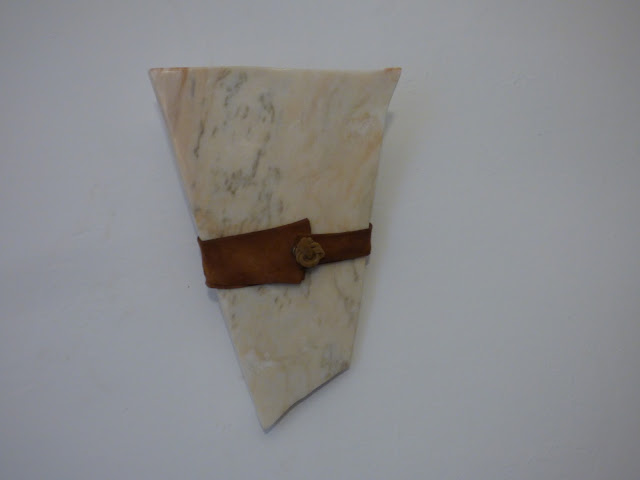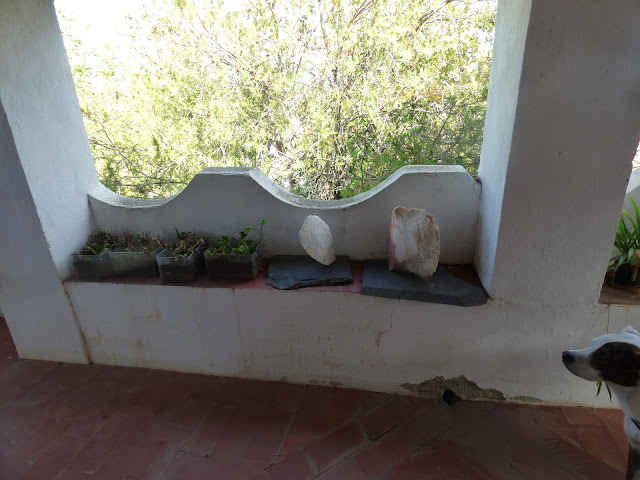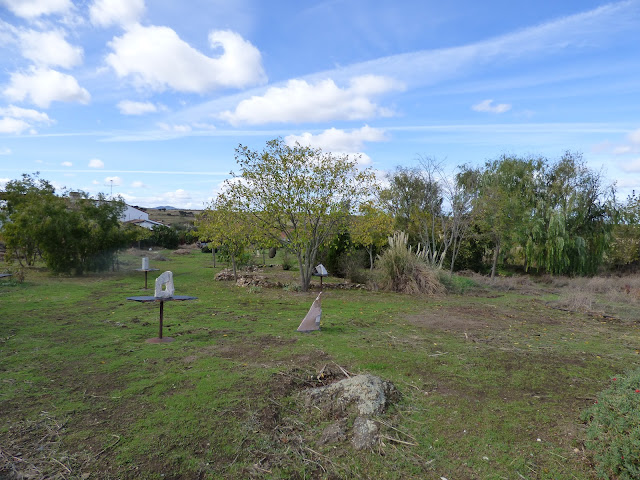News from Finca al-manzil, Extremadura. Accommodation. Life on the finca, local trips and longer voyages
Thursday 25 February 2021
Another visit to the molinos near Botija, one of our favourite walks, Spectacular after the spring rains
Sunday 22 November 2020
A trip to Las Hurdes and the waterfall of Chorro de la Meancera at El Gasto
We left the finca early as it's a 2 1/2 hour journey to the tiny pueblo of El Gasto, literally the end of the road, a very winding and steep road.
Our aim was to do the hike between El Gasto and the powerful waterfall known as Chorro de la Meancera.
The views down the valley and up to the amazing crags were exciting before getting to the main attraction, the waterfall itself. The water seems to irrupt from a narrow crack in the crag and falls with mighty force for over 100 metres crashing into a pool before tumbling down the river over smooth rocks and ledges.
.
The day was sunny and warm, a wonderful place to linger and breathe in the surrounding nature but I would love to come back on a gloomy day with rain and possibly some thunder and lightening for a really gothic romance experience.
We walked back on the same route with fresh perspectives.
In the past it was recorded that not only were the people here were so restricted that they could not make bread but also they built with no chimneys, letting the smoke from cooking fires escape where it could through the rafters and roof of slate slabs. I saw that none of the old houses had chimneys or even windows, just one primitive wooden door. A vision from the past appeared, a woman sitting at her door with smoke billowing through her roof, she might have been 80 and probably remembers the time before roads, electricity and piped water when the only food was foraged in the woods or from tiny patches of cultivation by the river which were regularly ruined and flooded every winter, when the village was just this collection of old houses with no modern conveniences at all.
She sat there quietly with memories of a life lived through amazing changes, it was as recent as her parents generation that the bizarre and mysterious life of the people here inspired real horror stories of disease, incest, mental and physical afflictions and incredible superstitions..... See this post
https://finca-al-manzil.blogspot.com/search?q=las+hurdes
P.S. Found the honey, bought 500 g of the most wonderful tasting honey for €7.00, no label but straight from the bee keeper.
Wednesday 28 October 2020
Visit to the sculpture garden and charming house of Lucia and Jasper in Salorino
With two friends, we visited Salorino, a village about 60 kms west of Caceres, the inspired home and sculpture garden of Lucia Beijlsmit and Jasper Quak. We have known them since our very early days in Extremadura and followed the progress of their house and garden with interest, an ever evolving project created with love and devotion over many years of imaginative hard work.
The village house has been preserved in its original form with some essential renovations, the rooms form a spacious flow for displaying sculptures, paintings and ceramic works.
There is a magical courtyard garden with sculptures seeming to grow organically amidst the abundant greenery.
 |
Here is Lucia's outdoor workshop, small boulders are strewn around, the raw material which will be transformed into her intriguing sculptures which retain an element of their original rough texture contrasting with the dense deep blackness of the sculpted and polished stone, supremely tactile! The sub-volcanic rocks are Diabase or Dolorite similar to volcanic basalt, Lucia and Jasper collect the rocks from the surrounding countryside of Salorino, for the marble sculptures the material is sourced from the quarries of the Portuguese marble towns of Vila Viçosa and Estremoz in the Alentejo, the province just over the nearby border with Portugal.
The sheltered courtyard with its sculpted secrets and charming gazebo has a little gate leading to another surprising aspect, an expanse of meadow with vast views beyond the enclosing stone walls.
Here's wonder dog, Flat Stanley surveying the scenery from the gazebo
The former sheep meadow with its poor soil at the edge of the village was the basis of this now green expanse planted with many trees and shrubs forming a perfect stage for Lucia's sculptures and also the works of other artists collected over the years.
It is possible to visit Lucia and Jasper with a previously arranged appointment. If you are looking for a unique work of art for your garden, patio or home there is much inspiration here.
For more information about Lucia's story, previous exhibitions and contact details-
https://www.luciabeijlsmit.com/







